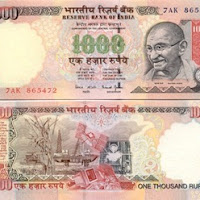 Arabica coffee jumped to a two-week high on concern that output inBrazil, the world’s biggest producer, may drop because of adverse weather. Cocoa and orange juice also rose, while sugar fell.
Arabica coffee jumped to a two-week high on concern that output inBrazil, the world’s biggest producer, may drop because of adverse weather. Cocoa and orange juice also rose, while sugar fell.
Frost is possible in coffee-growing regions in Brazil’s Parana state on July 4, Donald Keeney, a meteorologist at MDA EarthSat Weather in Rockville, Maryland, said today. Brazi’s state forecaster earlier this week said the cold already may have done some damage.
“The frost concern remains,” said Luis Rangel, vice president of commodity derivatives at ICAP Futures LLC in Jersey City, New Jersey. “We are also seeing some end-of-the month buying.”
Arabica coffee for September delivery climbed 4.9 cents, or 1.9 percent, to $2.656 a pound at 2 p.m. on ICE Futures U.S. in New York, after touching $2.668, the highest since June 16. The price climbed 0.6 percent this quarter and has risen 10 percent for the year.
Commodities prices have been supported this year by government spending programs to revive growth. The Federal Reserve’s second round of quantitative easing concludes today. The central bank plans to buy between $4 billion and $5 billion of notes due from December 2016 to June 2018. The purchases will be the last in the central bank’s effort to add $600 billion to the economy, according to its website.
Cocoa futures for September delivery rose $32, or 1 percent, to $3,151 a metric ton on ICE, gaining for the second quarter in three.
Raw-sugar futures for October delivery fell 0.58 cent, or 2.2 percent, to 26.34 cents a pound in New York, retreating for the second straight quarter. Prices are down 18 percent in 2011, heading for the first annual decline since 2007.
Orange-juice futures for September delivery rose 0.3 cent, or 0.2 percent, to $1.871 a pound, capping a 15 percent gain this quarter.
In London, refined sugar retreated, while robusta coffee and cocoa advanced on NYSE Liffe.





























0 comments